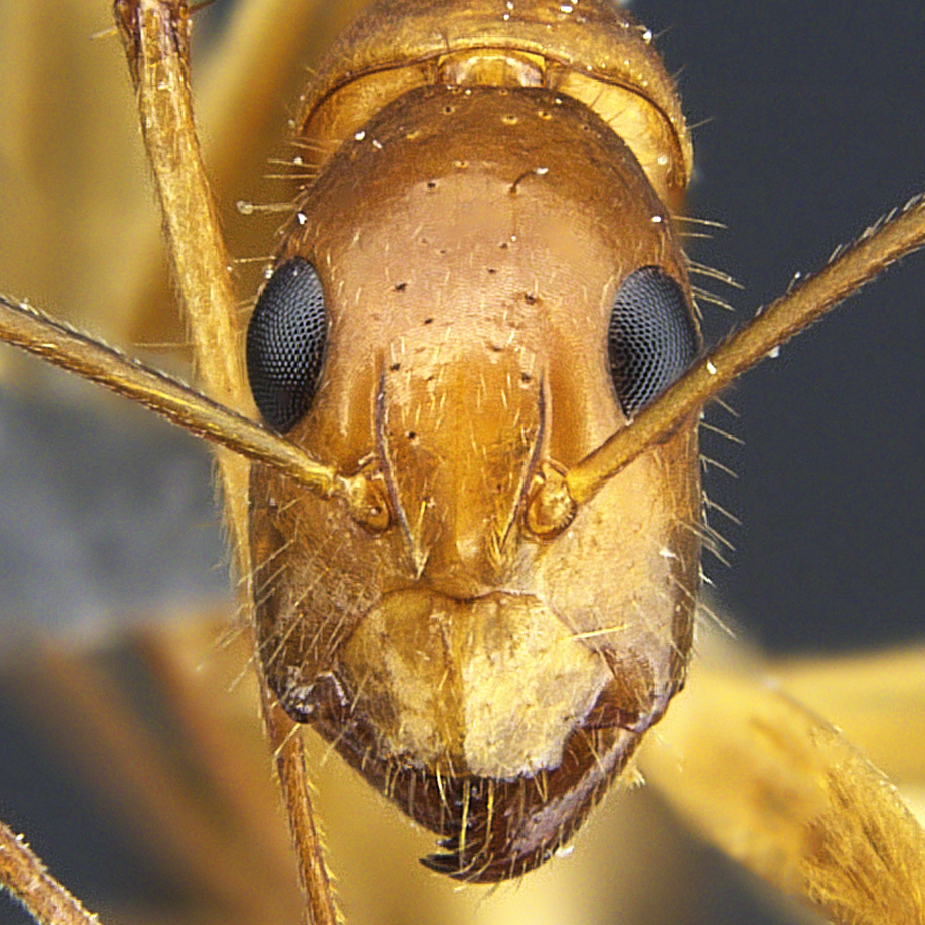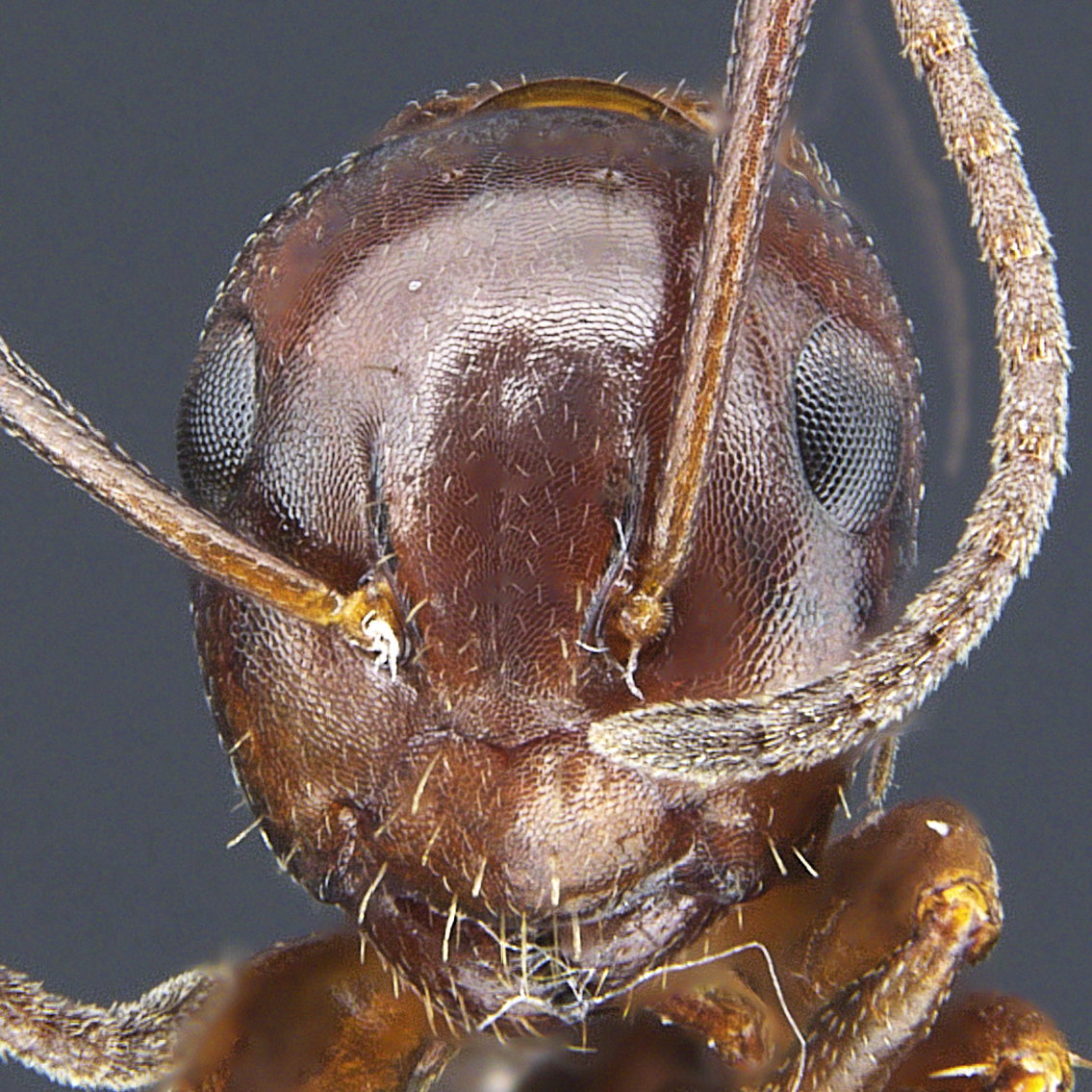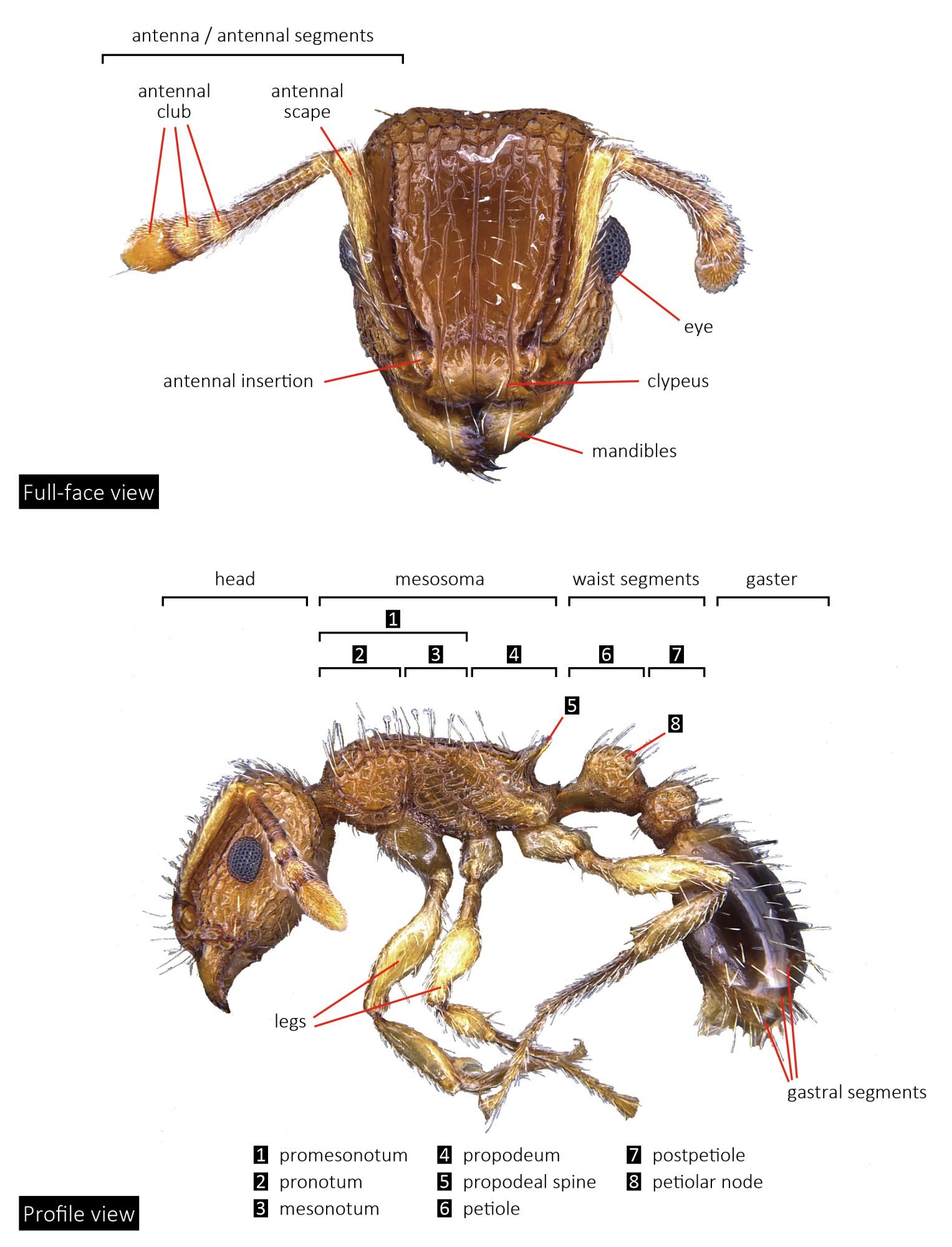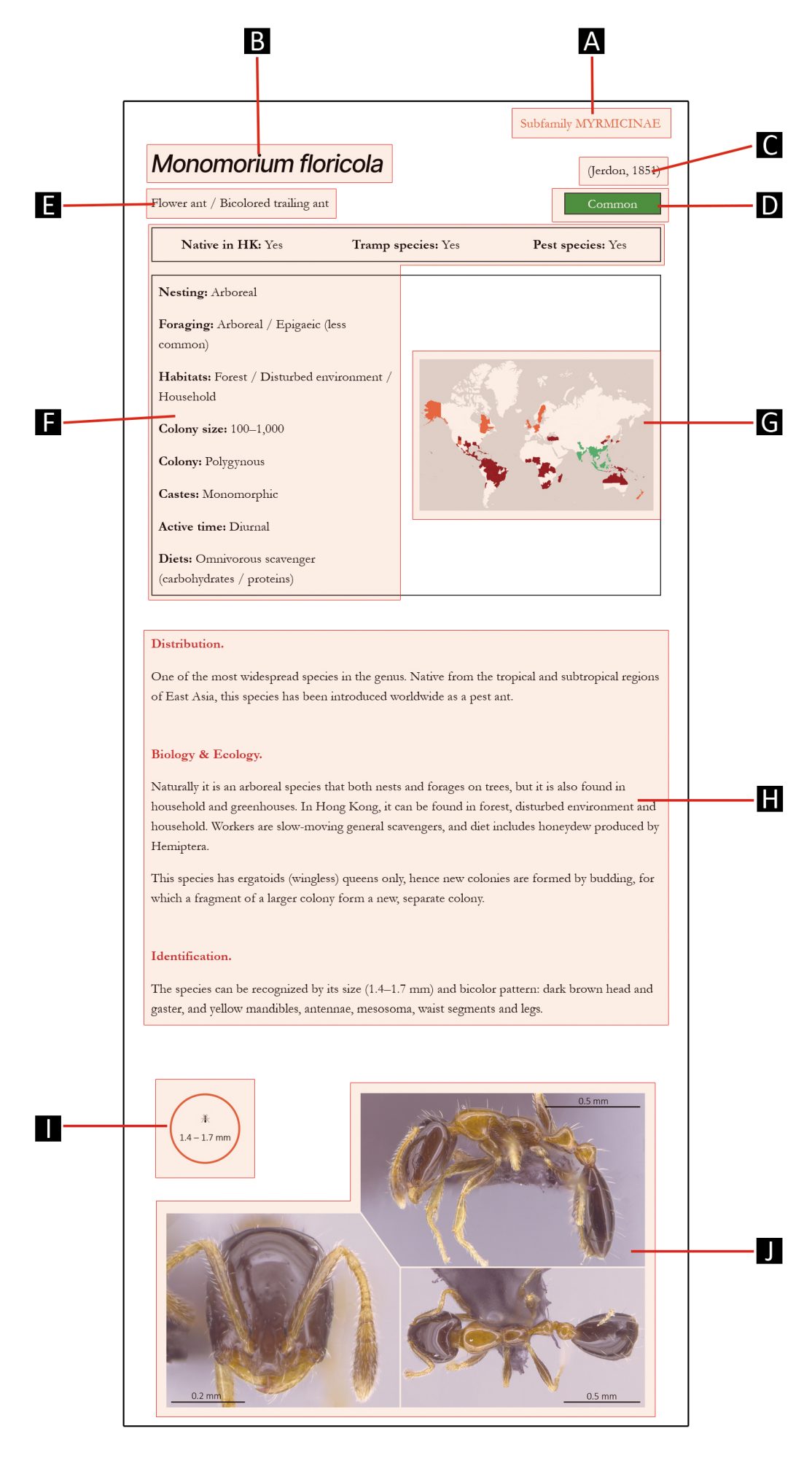
Subfamily FORMICINAE
GENUS
Camponotus
Mayr, 1861
Carpenter ants
Distribution.
A very successful ant genus with 1067 species described. This genus is currently the second-most species-rich genus of ant, with a cosmopolitan distribution and can be found in almost all countries (with the exception of a few island countries).
Biology & Ecology.
Camponotus species have highly diverse lifestyle, many of which are considered arboreal that both nest and forage on trees. Many species chew out wood with their mandibles and nest inside, but they are not able to digest cellulose and instead create sawdust-like by-product, hence their common name. Nests are medium to large and contain a thousand to hundreds of thousands of workers, and forming oligogynous colonies (more than one egg-laying queens per colony that do not cooperate with one another).
Camponotus species are mostly general scavengers, with diet includes honeydew produced by aphids. Some species are associated with myrmecophily and myrmecophyte plants, protecting their host plants from herbivorous insects, while they are offered with nesting sites and food from the host plants in return.
Some Camponotus species are honeypot ants, for which specialized workers would store food for their nest using their enormous abdomens and regurgitate when needed, i.e., they serve as living food storage.
Identification.
Camponotus species are medium to large in size (3–15 mm), with mostly black to brown coloration, but include a diverse range of other colors as well. They can be recognized by their mesosoma with a convex outline (with some exceptions), antennae with 12 segments and by having a single waist segment. Intraspecific and geographical variation in morphologies and polymorphism is common in the genus.

Species in this genus






